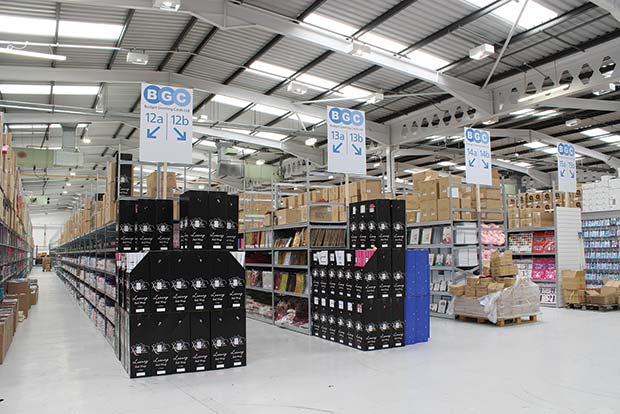In warehouses that rely on piece-picking, it’s necessary to install some shelving alongside pallet racking. Warehouse shelving offers a much more economical option for SKUs with slow to medium turnover.

In warehouses that rely on piece-picking, it’s necessary to install some shelving alongside pallet racking. Warehouse shelving offers a much more economical option for SKUs with slow to medium turnover.
One question we’re always asked at Action Storage is which shelf material is best? Chipboard and steel are popular options, so we’ve put together a comparison to help you find the right solution.
1. Strength
Strength will determine how much weight you can store in each location. Strength is commonly equated with the uniform distributed load (UDL) capacity of each shelf level.
On average, both standard steel shelving and standard chipboard shelving falls in the same range of around 200-500kg UDL per shelf. Heavy duty models can push the capacity up to 800kg plus.
Whether you pick steel or chipboard, you will pay for extra capacity.
2. Durability
A second critical factor is the durability of your units, as damaged or unusable storage locations can disrupt a busy warehouse. Both steel and chipboard units should last many years, but there are a couple of unique issues to bear in mind. If you expect your units to experience wet or damp conditions, opt for a galvanised steel shelving system.
Chipboard units are constructed of medium-density, P2 grade chipboard, which has a low resistance to moisture. In damp conditions, chipboard can lose its strength and become warped, meaning shelf levels will need replacing.
Depending on its density, chipboard might splinter or chip when loading heavy items with sharp corners. This will not affect the structural integrity of the units but it will impact the look of your warehouse.
3. Adaptability
Warehouse shelving must be adaptable to accommodate inventory changes. An adaptable shelving system lets you maximise vertical space by adjusting shelving levels to suit each storage location. Steel and chipboard units use two different boltless assembly procedures.
The most common chipboard shelving is a form of rivet shelving. This system relies on four separate uprights connected by horizontal beams. It can be fiddly to assemble these units, as the shelving will not be freestanding until a few horizontal beams are in place.
Although steel shelving is available in the same format, more manageable preassembled warehouse shelving means that only the width beams must be put in place to complete the unit. The horizontal beams are slotted downwards into louvred holes, allowing independent shelf adjustment.
Steel shelving systems offer greater modularity: shelves can be replaced by garment hanging rails or bins in a variety of configurations. For more complex warehousing solutions, steel shelving units are a better choice.
4. Maintenance
Most chipboard shelf systems will still rely on a galvanised steel structure. Therefore, in terms of maintaining the load bearing portions of the units, there’s very little difference between the two.
The only important difference is how easy the shelves are to keep clean and tidy.
Of course, galvanised steel shelves can be wiped down as long as abrasive materials are avoided.
Chipboard shelves are a little more difficult, as it’s important to avoid soaking the shelves. If spillages are a risk in your warehouse go for melamine shelves instead, this will add some water resistance.





Comments are closed.